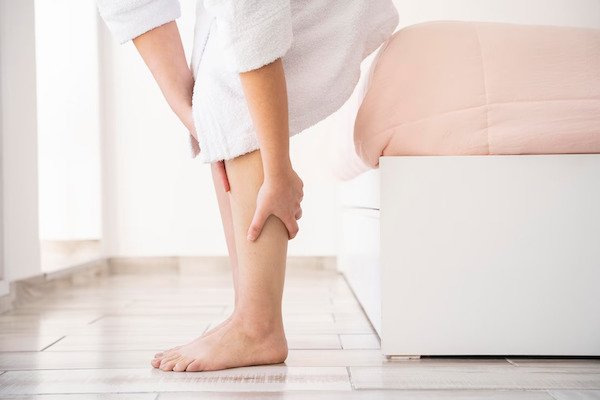
Ah, the delightful dance of life – one foot in front of the other, stepping through each chapter with a skip in your step. But wait, what happens when those trusty feet encounter a bump in the road? We're talking about those common foot predicaments that sneak up on us, threatening to put a hitch in our giddy-up.
But fret not, dear reader, for this journey through the world of common foot problems is not gloomy. Instead, think of it as a guide to keeping your feet and their supporting cast – your shoes – in perfect harmony. We're about to delve into the tales of blisters, bunions, and those notorious heel spurs.
This blog focuses on exploring common foot problems and simple solutions to tackle them.
8 Common Foot Problems In Adults
-
Blisters: Small Nuisances with Big Solutions

Blisters are one of the most common foot problems many people face. They are those pesky fluid-filled bumps that appear on your feet due to friction. They often occur from ill-fitting shoes or excessive moisture. To ensure a comfortable fit, it's important to measure our feet size accurately before purchasing footwear. This simple step can go a long way in keeping those pesky blisters at bay.
To tackle blisters:
-
Start by wearing fitting footwear with moisture-wicking socks.
-
If you feel a blister forming, place a bandage or blister pad over it to protect it from further irritation.
-
If a blister does burst, clean the area with mild soap and water, apply an antiseptic, and cover it with a sterile bandage.
2. Athlete's Foot: Conquering the Fungus Invader
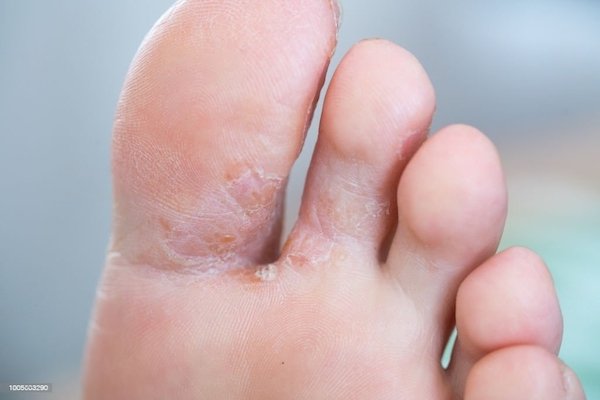
An athlete's foot is a fungal infection that causes itching, burning, and cracked skin between the toes. This is a common foot problem in adults. Combat this common problem by
-
Keep your feet clean and dry, especially between the toes.
-
Choose breathable footwear and avoid walking barefoot in public areas like pools and locker rooms.
Over-the-counter anti-fungal creams can be effective, but consult a healthcare professional for further treatment if the infection persists.
3. Plantar Fasciitis: When Every Step Hurts
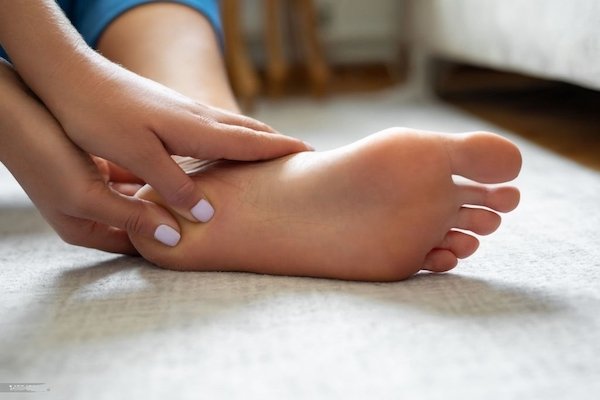
Plantar fasciitis is a pain in the heel and the bottom of the foot, particularly upon waking up or after prolonged rest periods. This condition results from plantar fascia inflammation, a thick tissue band connecting the heel bone to the toes.
To reduce plantar fasciitis:
- Try gentle stretching exercises for the calf and plantar fascia
- Wear supportive shoes as a fundamental step in addressing common foot problems, and consider making informed decisions between online and offline shoe shopping for a comprehensive approach.
- Consider using orthotic inserts.
- Ice massages
- Anti-inflammatory medications
- In severe cases, physical therapy can also provide relief
4. Ingrown Toenails: Outsmarting the Nail Trap
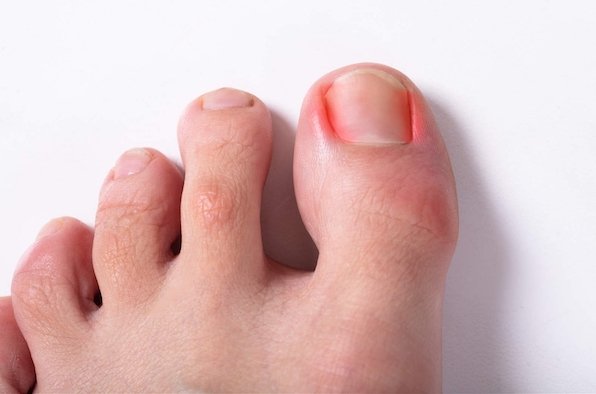
Another common foot problem is ingrown toenails. Ingrown toenails come up when the edge of a nail grows into the surrounding skin, causing pain, redness, and potential infection.
-
Avoid tight-fitting shoes and trim your nails straight across to prevent ingrown toenails.
-
If you're already dealing with one, soak your foot in warm water and gently lift the ingrown edge using a clean, sterile tool.
For persistent cases, consult a podiatrist who can provide professional treatment, including partial nail removal if necessary.
5. Corns and Calluses: Softening Rough Spots
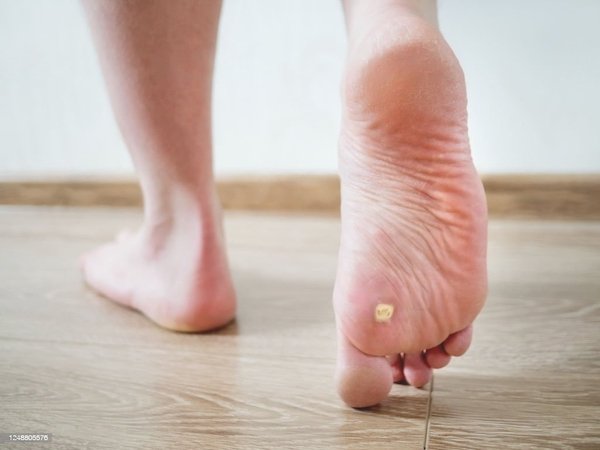
Corns and calluses are thick, hardened layers of skin that develop due to repeated friction or pressure. While they can be unsightly and uncomfortable, they're usually harmless. To manage them,
-
Use a pumice stone to gently exfoliate the affected area after soaking your feet in warm water.
-
Applying moisturizing creams can also help soften the skin.
If a corn or callus becomes painful, consult a healthcare professional to discuss appropriate treatment options.
6. Bunions: Dealing with the Toe Deviation
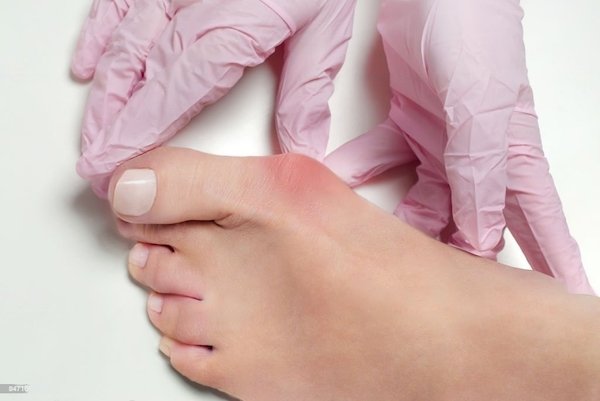
Bunions are bony protrusions that develop at the base of the big toe, often causing the big toe to point toward the other toes. Genetics and improper footwear are common culprits.
-
Wear wide, comfortable shoes with a roomy toe box, like faux leather sandals, to effectively ease bunion discomfort.
-
Shoe inserts or orthotics can also provide support and ease pressure on the bunion.
A podiatrist may recommend surgery to realign the toe joint in more severe cases.
7. Heel Spurs: Navigating the Pointy Predicament
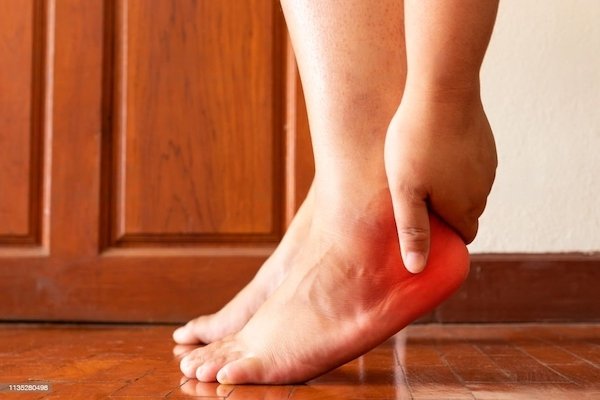
Heel spurs are bony growths on the underside of the heel bone, often causing pain when walking or standing. They frequently go with plantar fasciitis. Treatment involves
-
Addressing the underlying cause, often through rest, stretching, and supportive footwear, such as comfortable sandals.
-
Over-the-counter pain relievers and orthotic inserts can also help manage discomfort.
-
A healthcare professional might recommend physical therapy or corticosteroid injections in persistent cases.
8. Neuropathy: Navigating Nerve Health

Neuropathy is when nerve damage leads to tingling, numbness, or foot pain. Diabetes is a common cause. Neuropathy can be managed by
-
Maintaining proper blood sugar levels, following a healthy diet, and staying active.
-
Foot care is essential; inspect your feet for injuries or infections.
-
Cushioned socks and well-fitting shoes are crucial for preventing further complications.
-
Consult your doctor for personalized guidance on managing neuropathy.
9. Hammertoes:
Hammertoes are toes that become bent at the middle joint, resembling a hammer. Ill-fitting shoes and genetics can contribute to their development. To manage hammertoes:
-
Wear roomier, more comfortable shoes.
-
Use inserts or foot pads to help reposition your toes.
-
In severe cases, surgery may be necessary.
10. Gout:
Gout is a form of arthritis caused by the buildup of uric acid in the joints, often affecting the big toe first. To manage gout:
-
Avoid foods high in purines, such as red meat and alcohol.
-
Stay hydrated.
-
Consult a healthcare professional for medication options.
11. Claw Toes and Mallet Toes:
Claw toes curl upward at the joint, while mallet toes bend downward at the tip. Tight shoes and nerve damage can lead to these conditions. To manage:
-
Choose comfortable shoes with roomy toe boxes.
-
For mallet toes, a corn may develop, requiring care.
-
Seek medical advice for severe cases.
12. Toenail Fungus:
Toenail fungus can cause discolored and deformed nails. It often develops due to nail damage. To manage toenail fungus:
-
Consult a doctor for prescription antifungal medication.
-
Maintain proper foot hygiene.
13. Swollen Feet and Ankles:
Swelling in the feet and ankles can result from various factors, including fluid retention and medical conditions. To reduce swelling:
-
Elevate your feet regularly.
-
Avoid prolonged sitting or standing.
-
Consider compression stockings.
14. Achilles Tendonitis
Achilles tendonitis involves inflammation of the Achilles tendon, typically due to overuse or improper footwear. To manage:
-
Rest and avoid exacerbating activities.
-
Stretch regularly.
-
Consider orthotic inserts.
-
Use ice massages and anti-inflammatory medications.
15. Stress Fractures:
Stress fractures are tiny bone cracks, often caused by overuse or repetitive impact. To prevent and manage:
-
Gradually increase exercise intensity.
-
Ensure proper footwear.
-
Seek medical attention if a stress fracture is suspected.
16. Hygiene and Foot Care:
Maintaining good foot hygiene and regular foot care routines is crucial in preventing many common foot problems. Encourage readers to:
-
Wash and dry their feet daily.
-
Trim toenails straight across.
-
Inspect feet for signs of infection or injury.
17. Flat Feet
Flat feet, or fallen arches, can lead to discomfort and pain. To address:
-
Consider orthotic insoles or arch supports.
-
Strengthen foot and calf muscles through exercises.
-
Choose shoes with adequate arch support.
18. Morton's Neuroma
Morton's neuroma is thickening of tissue around a nerve in the ball of the foot. It may result from tight shoes or foot abnormalities. To manage:
-
Change to well-fitting shoes.
-
Use foot pads.
-
Consult a healthcare professional for treatment options.
19. Sesamoiditis
Sesamoiditis is inflammation of the sesamoid bones in the foot. It can cause pain under the big toe joint. To manage:
-
Rest, ice, and use pain relievers.
-
Consider cushioned footwear.
-
Consult a healthcare professional for guidance.
20. Diabetic Neuropathy
Diabetic neuropathy involves nerve damage that leads to tingling, numbness, or foot pain. To manage:
-
Maintain proper blood sugar levels.
-
Inspect feet regularly for injuries.
-
Use cushioned socks and well-fitting shoes.
-
Consult a doctor for personalized guidance.
21. Plantar Wart
Plantar warts are common warts that appear on the sole of the foot. To manage:
-
Use over-the-counter treatments with salicylic acid.
-
Consult a doctor for persistent warts or if you need assistance with treatment.
And there you have it! Some common foot problems with solutions that improve your feet's woes. While some foot problems can be managed with home care and attention, some need expert advice. Remember, expert advice can save you from unnecessary pain and frustration in the long run.
As we bid adieu to our journey through common foot problems, remember that our feet are more than just functional appendages – they're our partners in exploration, our supporters through every step of life's adventure. By embracing a foot-friendly approach to care, you enhance your physical comfort and nurture your overall well-being.
Here are some quick tips to help you avoid some of the common foot problems
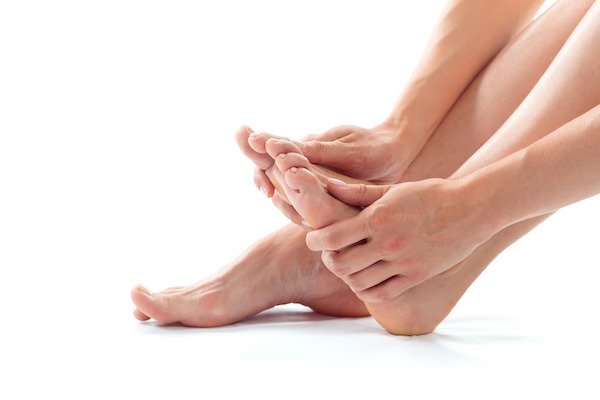
-
Listen to your feet - Our feet are excellent communicators, often sending signals long before a minor annoyance becomes a major problem. Don't ignore those whispers of discomfort – whether it's a tinge of pain or a persistent itch, your feet are trying to get your attention.
-
Proper support - Shoes Invest in shoes that offer proper support, a comfortable fit, and enough room for your toes to wiggle without restraint. Your feet will thank you for the extra breathing space.
-
Feet hygiene - When it comes to foot problems like athlete's foot, hygiene is your secret weapon. Keeping your feet clean and dry is essential to prevent fungal infections from taking root. Give your feet a spa treatment with regular washing, thorough drying, and fresh air whenever possible.
-
Exercise and stretches - Prevention is often better than cure, which also holds true for foot problems. Incorporate gentle foot stretches and exercises into your routine to keep your feet flexible and strong.
So, let's lace up those lessons, slip on our newfound wisdom, and step confidently into a future where foot problems are no longer stumbling blocks but merely a minor detour in the joyful journey of life.
With every stride, let your feet carry you towards new horizons, armed with the knowledge that you're well-equipped to face any foot-related challenge that comes your way.
After all, life is a dance, and with happy feet, you're ready to waltz through it all!
FAQs
What are the most common foot diseases?
Some of the most common foot diseases include athlete's foot (fungal infection), plantar fasciitis (inflammation of the tissue on the bottom of the foot), bunions (bony bumps at the base of the big toe), ingrown toenails, and hammertoes (abnormal bending of the toe joints).
What is a common foot pain?
One common foot pain is plantar fasciitis, which causes a sharp pain in the heel, especially in the morning. Another common foot pain is metatarsalgia, which is pain and inflammation in the ball of the foot. Additionally, conditions like bunions, hammertoes, and arthritis can also lead to foot pain.
What are signs of bad feet?
Signs of poor foot health include persistent pain or discomfort, visible deformities like bunions or hammertoes, calluses and corns, toenail issues such as ingrown toenails or fungal infections, limited range of motion in the feet, and difficulty walking or standing for extended periods.
How do you check foot health? To check foot health, you can:
-
Regularly inspect your feet for any abnormalities, such as redness, swelling, or sores.
-
Check for changes in the shape or alignment of your feet.
-
Pay attention to any pain or discomfort, especially during walking or standing.
-
Examine your toenails for signs of infections or ingrown nails.
-
Assess your footwear to ensure it provides proper support and doesn't cause friction.


 Aug 23, 2023
Aug 23, 2023
 Aug 17, 2023
Aug 17, 2023
